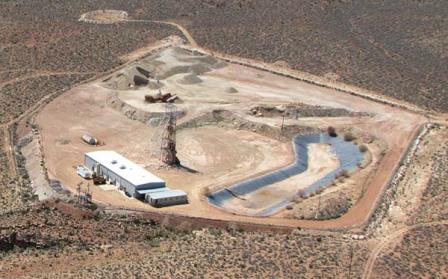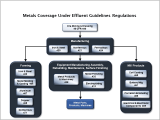Ore Mining and Dressing Effluent Guidelines
 EPA promulgated the Ore Mining and Dressing Effluent Guidelines and Standards (40 CFR Part 440) in 1975, and amended the regulation in 1978, 1979, 1982 and 1988. The regulation covers wastewater discharges from ore mines and processing operations. The Ore Mining Effluent Guidelines and Standards are incorporated into NPDES permits.
EPA promulgated the Ore Mining and Dressing Effluent Guidelines and Standards (40 CFR Part 440) in 1975, and amended the regulation in 1978, 1979, 1982 and 1988. The regulation covers wastewater discharges from ore mines and processing operations. The Ore Mining Effluent Guidelines and Standards are incorporated into NPDES permits.
- What is Ore Mining and Dressing?
- Facilities Covered
- Preliminary Study
- Rulemaking History
- Additional Information
What is Ore Mining and Dressing?
Mine operators extract ores (metal-bearing rock) from underground mines and surface mines using machinery, explosives and chemicals. Extraction processes include dressing (picking, sorting, washing of ores), milling (crushing, grinding, etc.) and beneficiation (processing to improve purity/quality).
Wastewater is generated during the mining process from groundwater produced during ore extraction, from water used by operators for equipment cooling and dust control, and from precipitation entering mines. Wastewater is also produced during the ore milling and beneficiation processes (e.g., chemical leaching), and from contaminated stormwater at storage facilities.
These activities are included within NAICS code 2122, metal ore mining. (Note: the NAICS group listing is provided as a guide and does not define the coverage of the Ore Mining regulations. For precise definitions of coverage, see the applicability sections in 40 CFR Part 440.)
Note: Smelting (heating the ore mixtures to separate liquid metal and impurities) is covered in the Iron and Steel Manufacturing Category (40 CFR Part 420, Subpart C) and the Nonferrous Metals Manufacturing Category (40 CFR Part 421).
Facilities Covered
-
Iron Ore
-
Aluminum Ore
-
Uranium, Radium and Vanadium Ores
-
Mercury Ore
-
Titanium Ore
-
Tungsten Ore
-
Nickel Ore
-
Vanadium Ore (Mined Alone and Not as a Byproduct)
-
Antimony Ore
-
Copper, Lead, Zinc, Gold, Silver, and Molybdenum Ores
-
Platinum Ores
-
Gold Placer Mining
Preliminary Study
- Preliminary Study Report (2011)
Rulemaking History
1988 Amendment
- Documents, including:
- Final Rule (May 24, 1988)
- Development Document
- Proposed Rule (November 20, 1985)
1982 Amendment
- Documents, including:
- Final Rule (December 3, 1982)
- Development Document
- Proposed Rule (June 14, 1982)
1979 Amendment
- Final Rule (March 1, 1979)
1978 Amendment
- Documents, including:
- Clarification Notice (February 8, 1979)
- Final Rule (July 11, 1978)
- Development Document
- Proposed Rule (November 6, 1975)
1975 Initial Rulemaking
- Documents, including:
- Notice of Suspension (May 24, 1976)
- Interim Final Rule (November 6, 1975)
- Development Document
Additional Information
For additional information regarding Ore Mining and Dressing Effluent Guidelines, please contact Steve Whitlock (whitlock.steve@epa.gov) or 202-566-1541.

